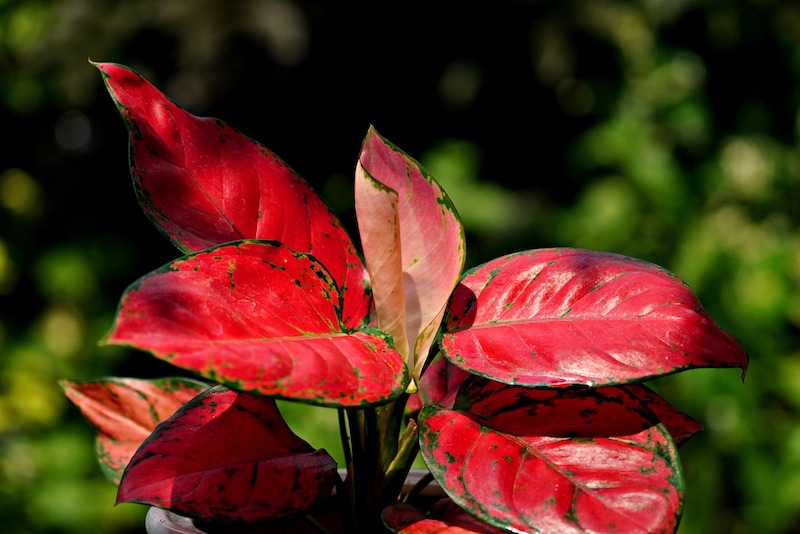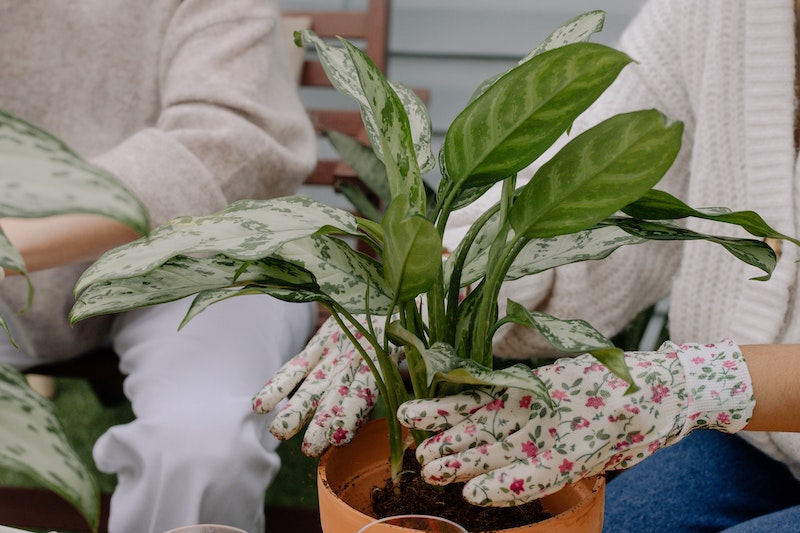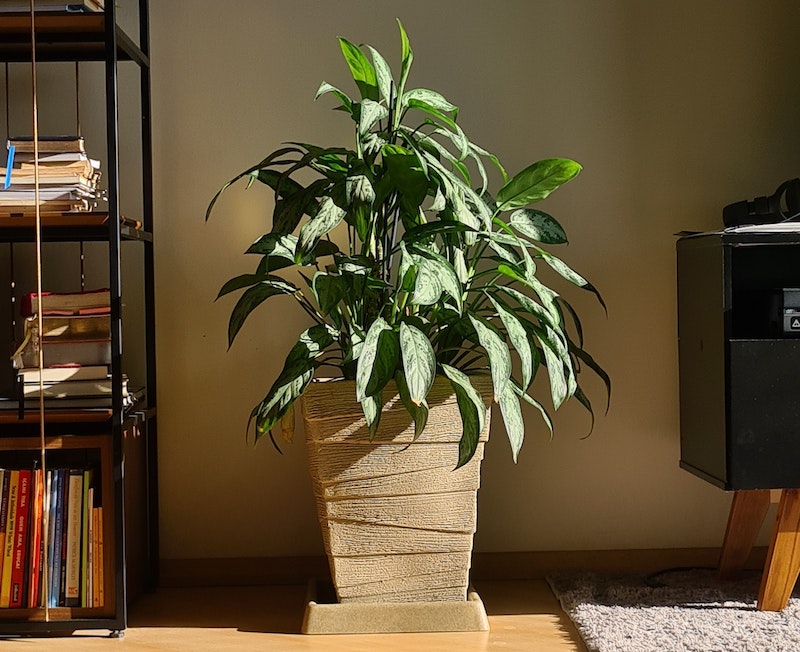Growing Aglaonema
Aglaonema, sometimes commonly known as Chinese evergreen, encompasses several cultivars that make excellent houseplants.This common name is somewhat deceptive, as the plant is a tropical perennial. Different cultivars of aglaonema offer a range of color variations, a slow growth rate, and annual blooms. Some aglaonema are easier to grow than others but most are excellent candidates for beginner growers. Cultivars range from the compact, or no more than about 8 to 10 inches tall, to about 24 inches tall.
Under ideal conditions, this houseplant may occasionally bloom with a greenish-white spathe followed by clusters of red berries. However, this species is generally prized solely for its foliage, and snipping off blooms will encourage leaf growth.

Aglaonema Sunlight Requirements
In its native subtropical environment, aglaonema is an understory plant, so it is well suited to lower light conditions in the home or office. There is some variation in preferred light depending on the cultivar of aglaonema. Specimens with dark green foliage prefer medium to low light, while variegated varieties will do well in bright indirect or medium light.
Excessive or direct light will burn leaves or cause leaves to assume a vertical position. Colorful varieties will live without issues in low light conditions, but they may have less color definition on their foliage. Leggy stems may indicate inadequate light, or this may be a symptom of being excessively rootbound.
Planting Aglaonema
Aglaonema will grow best in a well-drained, slightly acidic potting soil. The ideal pH range for this species is 5.6 to 6.5. Work additional perlite into any potting soil that seems too heavy or dense. Choose a pot with plenty of drainage holes to avoid problems with root rot. Aglaonema does well when it is slightly rootbound, but a too small container can lead to leggy growth.
To repot this houseplant, choose a container slightly larger than the current container. The best time to transplant aglaonema is in spring or summer when the plant is actively growing. Since these plants are slow growers, they may only need transplanting every 2 to 3 years.

Watering Aglaonema
Aglaonema thrives in moist but not overly wet soil. Always check the soil before watering to avoid accidentally overwatering and causing problems with root rot. When watering this houseplant, avoid using cold or softened water. Instead, opt for distilled or rain water where possible. Water the plant slowly and thoroughly, or until water begins to come out of the container’s drain holes. Irrigate whenever the soil 2 inches from the surface or 25% down from the top of the container feels dry to the touch.
The Chinese evergreen prefers high humidity. Regular misting, keeping a humidifier in the area, or growing this plant atop a pebble tray can all satisfy this requirement. In the winter, growth slows significantly, so the plant will require less frequent watering.
Fertilizing Aglaonema
Fertilizing aglaonema when the plant is actively growing will encourage plant vigor. This houseplant is not a particularly heavy feeder, though. Choose a liquid or slow-release fertilizer with a ratio of 3-1-2 and apply it twice annually at a rate according to label instructions. Time one application for the beginning of the growing season and the other for the middle of the growing season. Make sure any fertilizer chosen contains micronutrients, as this plant is prone to copper deficiencies.
Common Aglaonema Problems
If Aglaonema is overwatered, it can develop root rots. Under-watering can cause leaf wilt and yellowing. Where conditions are drafty or the air is quite dry, leaves may turn brown. Possible pests of this houseplant include mealybugs, spider mites, and aphids. Regular monitoring and applying an insecticidal soap correctly can address these pests.
If leaves turn yellow even with correct watering practices, this may indicate a copper or other nutrient deficiency. Apply fertilizer to address this issue. If splashing water regularly hits foliage or plants are crowded together, the aglaonema is more likely to develop fungal leaf spots from diseases like anthracnose and myrothecium, both addressable using a correctly applied copper fungicide. Cold temperatures can cause the plant to develop gray or white splotches or lower leaves may collapse.

Propagating Aglaonema
Aglaonema is propagated by division or by taking stem cuttings. To divide this houseplant, remove it from the container gently, tease out loose soil, and gently work apart the root clump into two or more sections. If the plant is rootbound, with roots that are tightly tangled together, take a sharp, disinfected knife to cut the root mass into sections. Repot each section, water it in well, and be sure to keep the soil evenly moist until new growth emerges.
It is also possible to root this plant from stem cuttings by simply cutting a several-inch section from a vigorous, actively growing mother plant and setting it in a glass of water.
Growing Aglaonema Outdoors
The ideal temperature range for aglaonema is between 65 and 80 degrees Fahrenheit. Cold damage to these tropical and subtropical plants can occur when temperatures drop below 60 degrees Fahrenheit. Only bring the plant outdoors when temperatures will remain above this temperature.
In warm areas, it may be planted as a filler plant or low hedge; in more temperate areas, it is better suited to stay in a container in a shaded area. Make sure plants kept outdoors in containers are not exposed to full sunlight, as this will burn the foliage. Before bringing the plant back indoors seasonally, inspect it thoroughly for any pest or disease and remove affected leaves or treat the plant with insecticidal soap or fungicide as needed.
 |
Author Angela Ryczkowski - Published 2-25-2023 |
